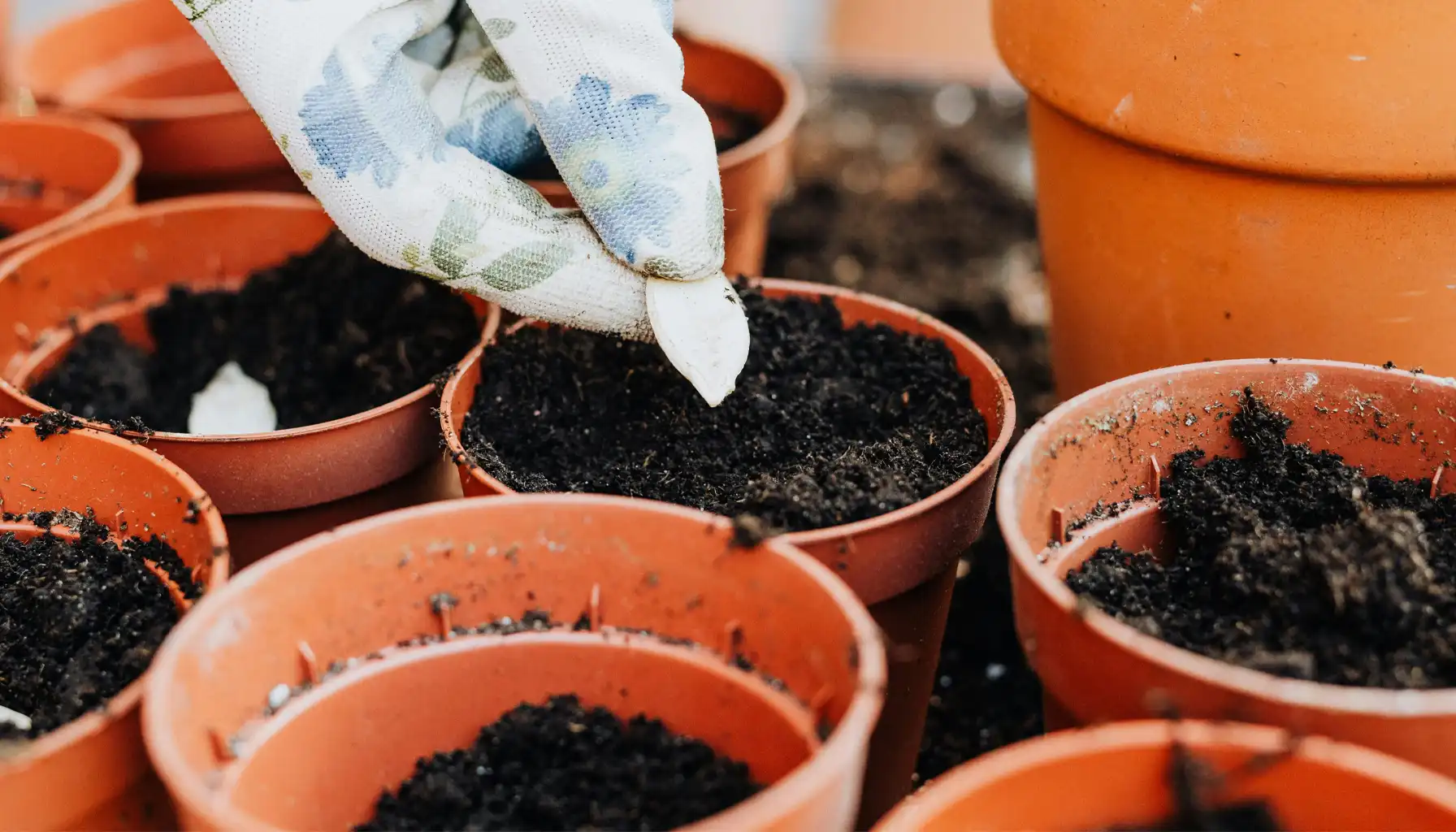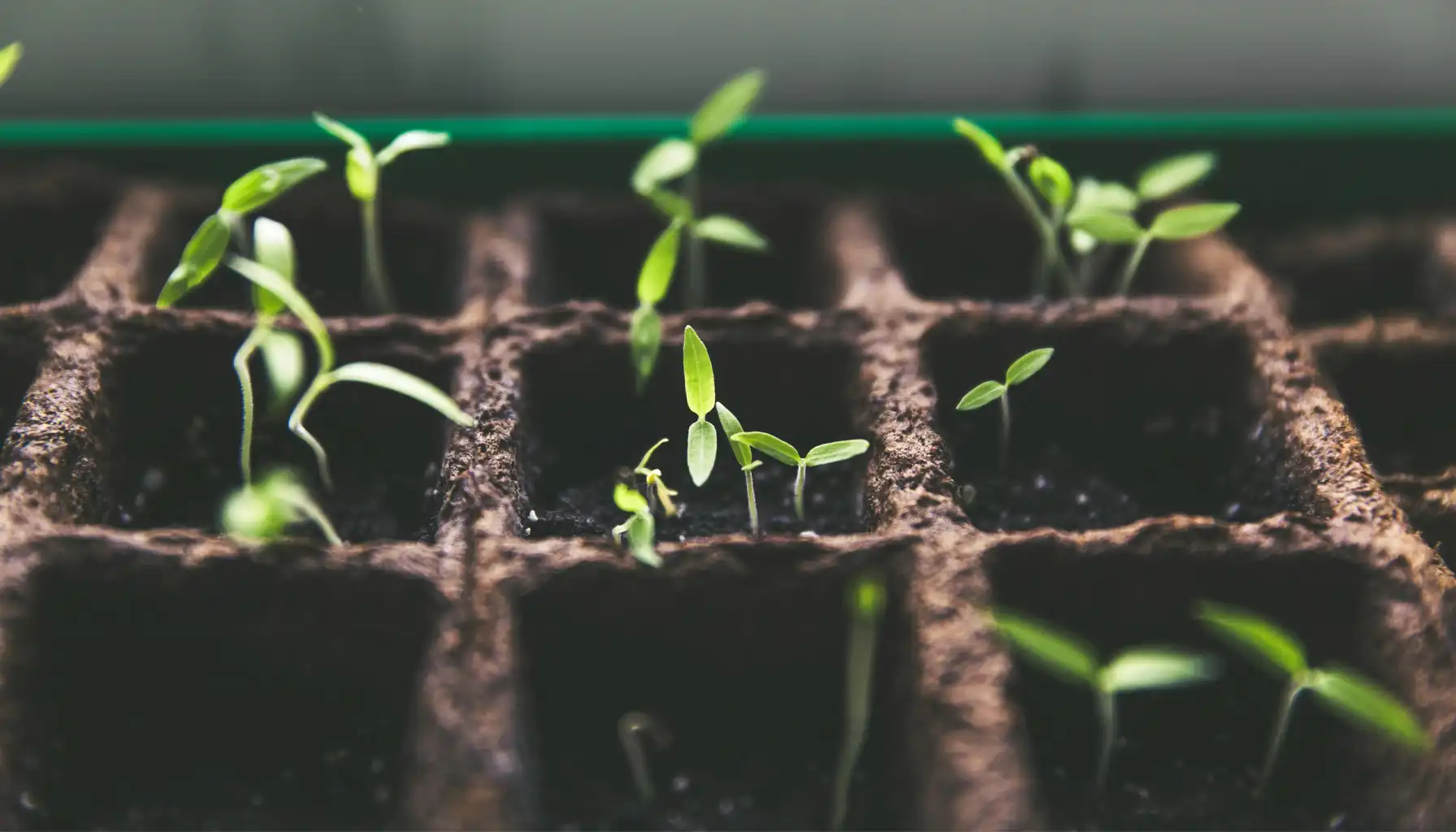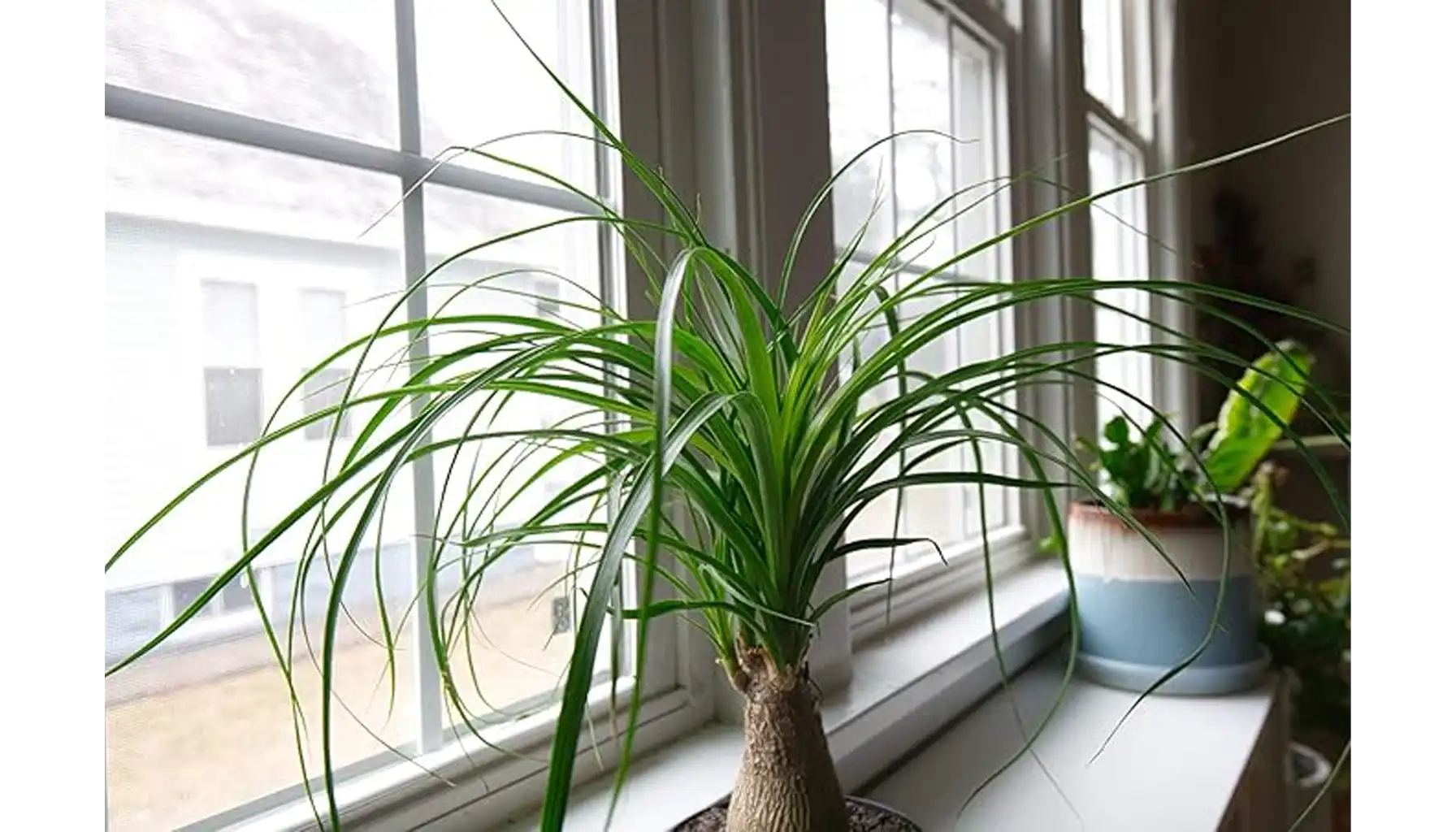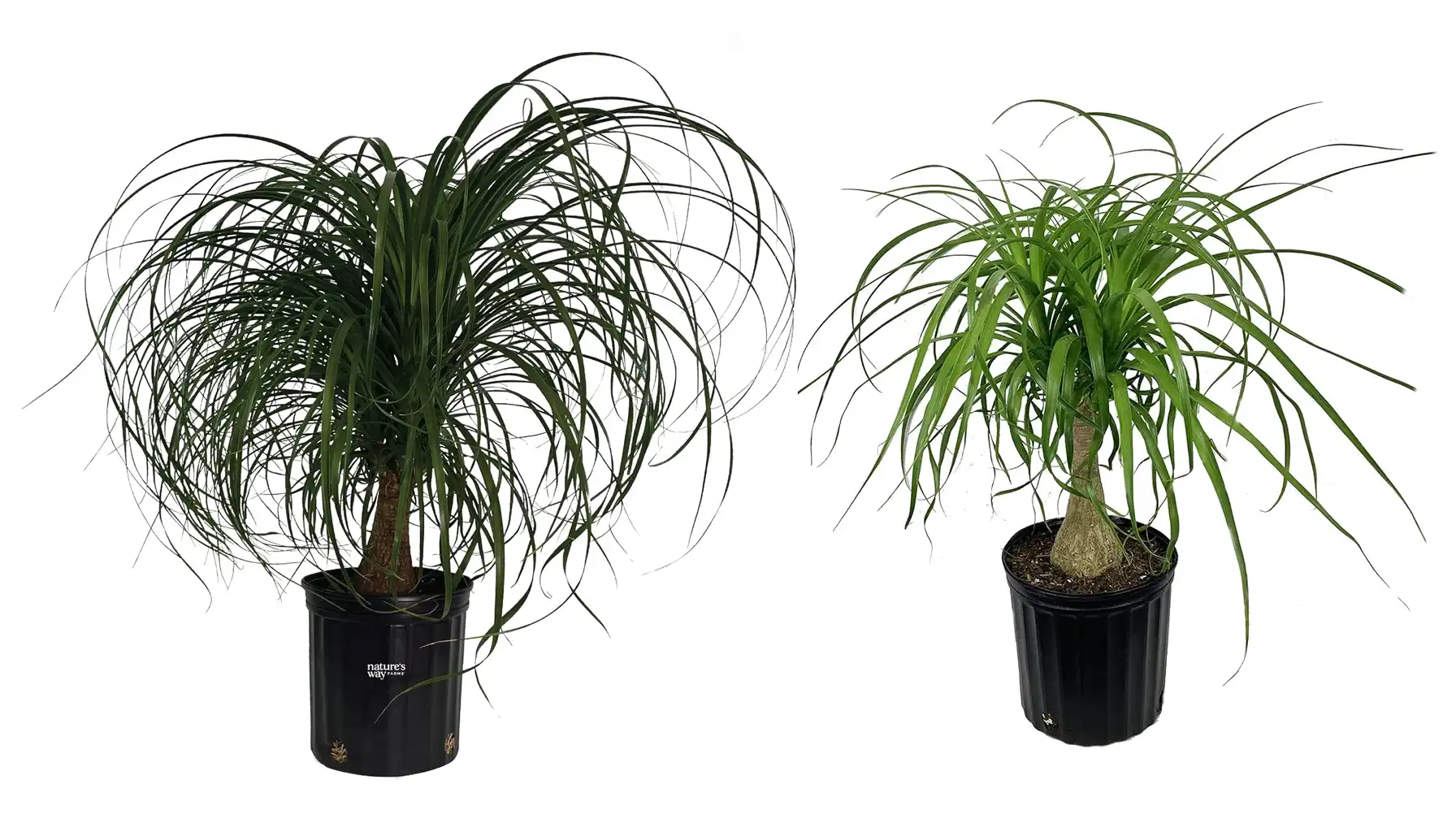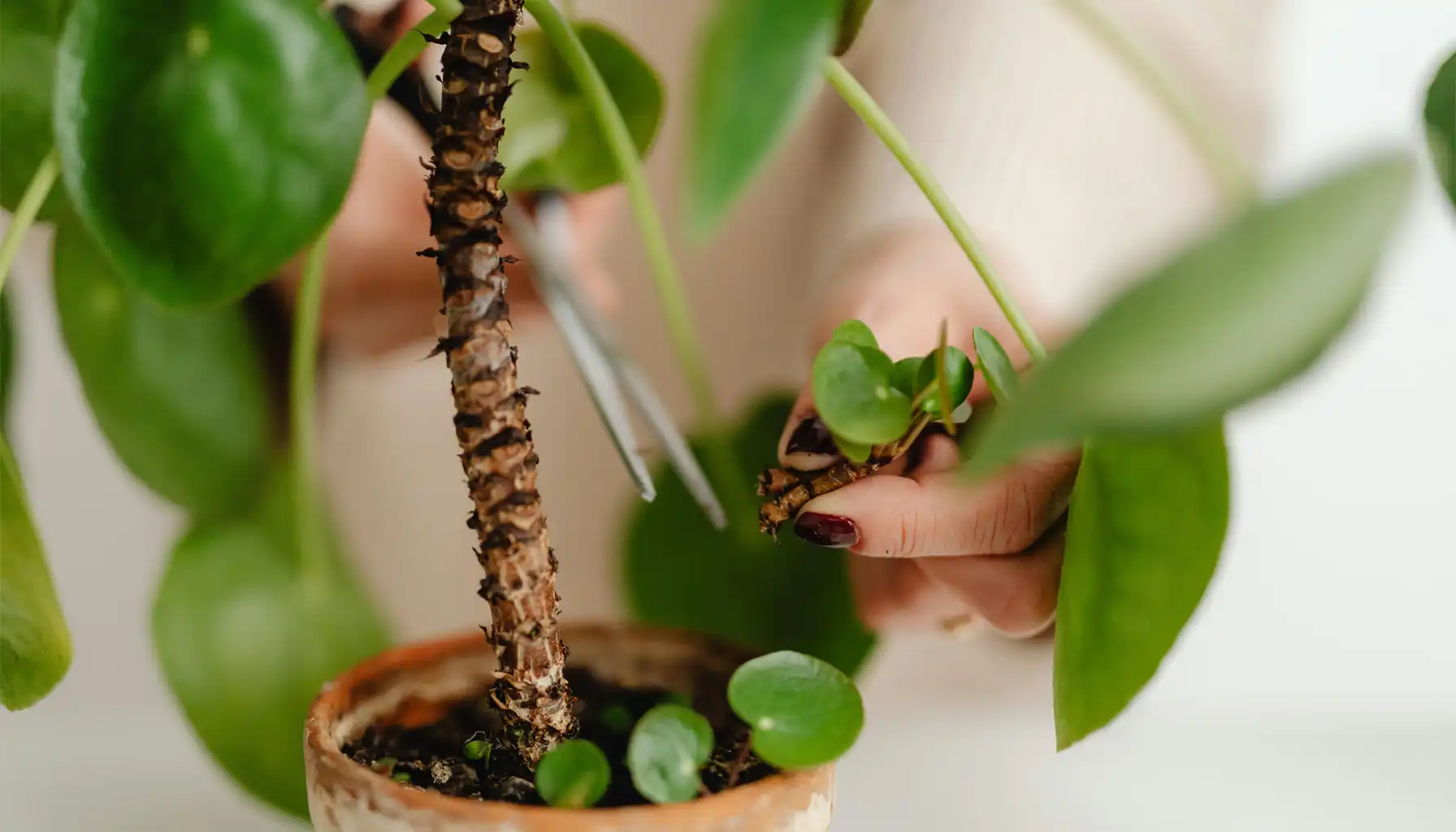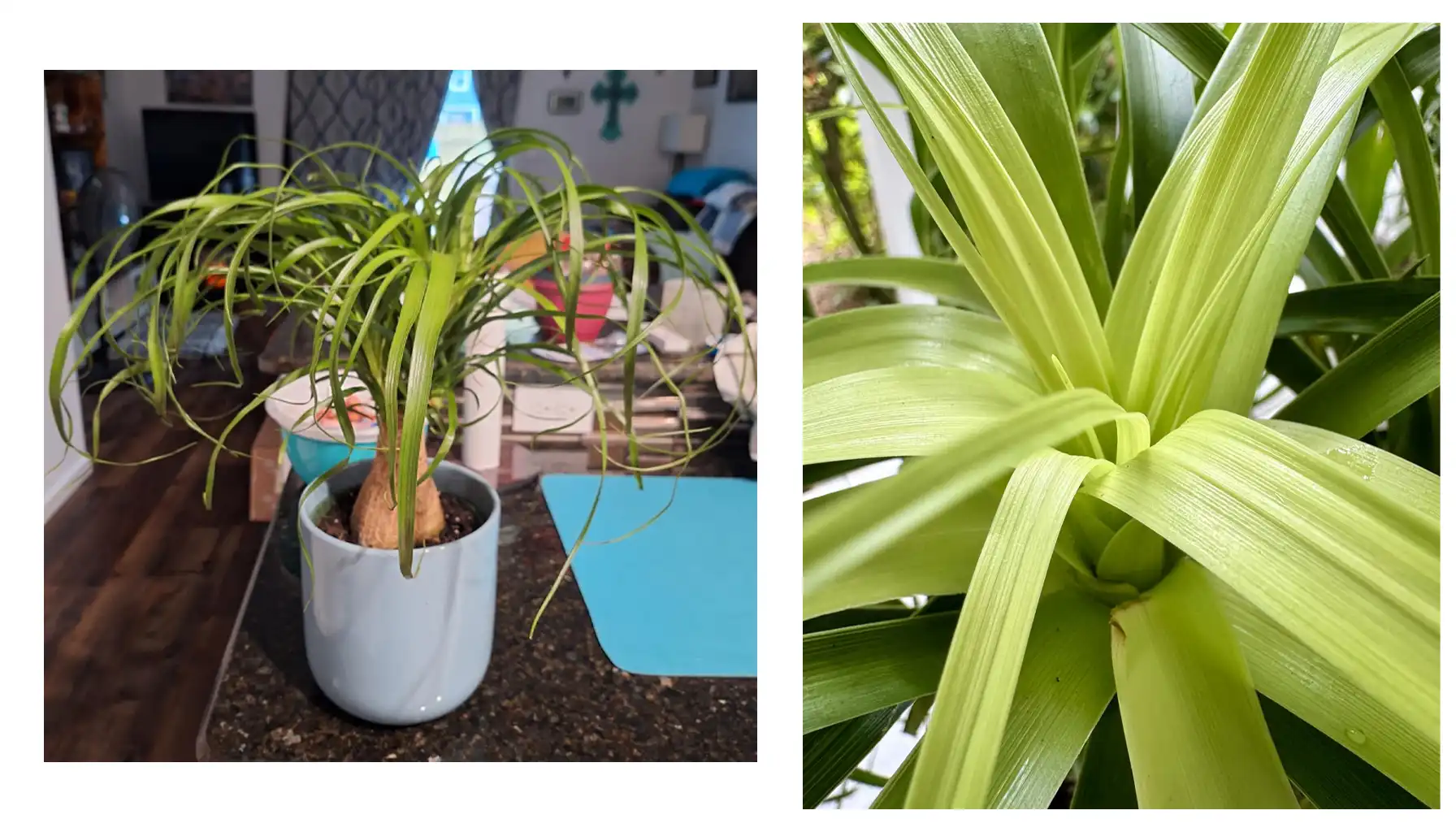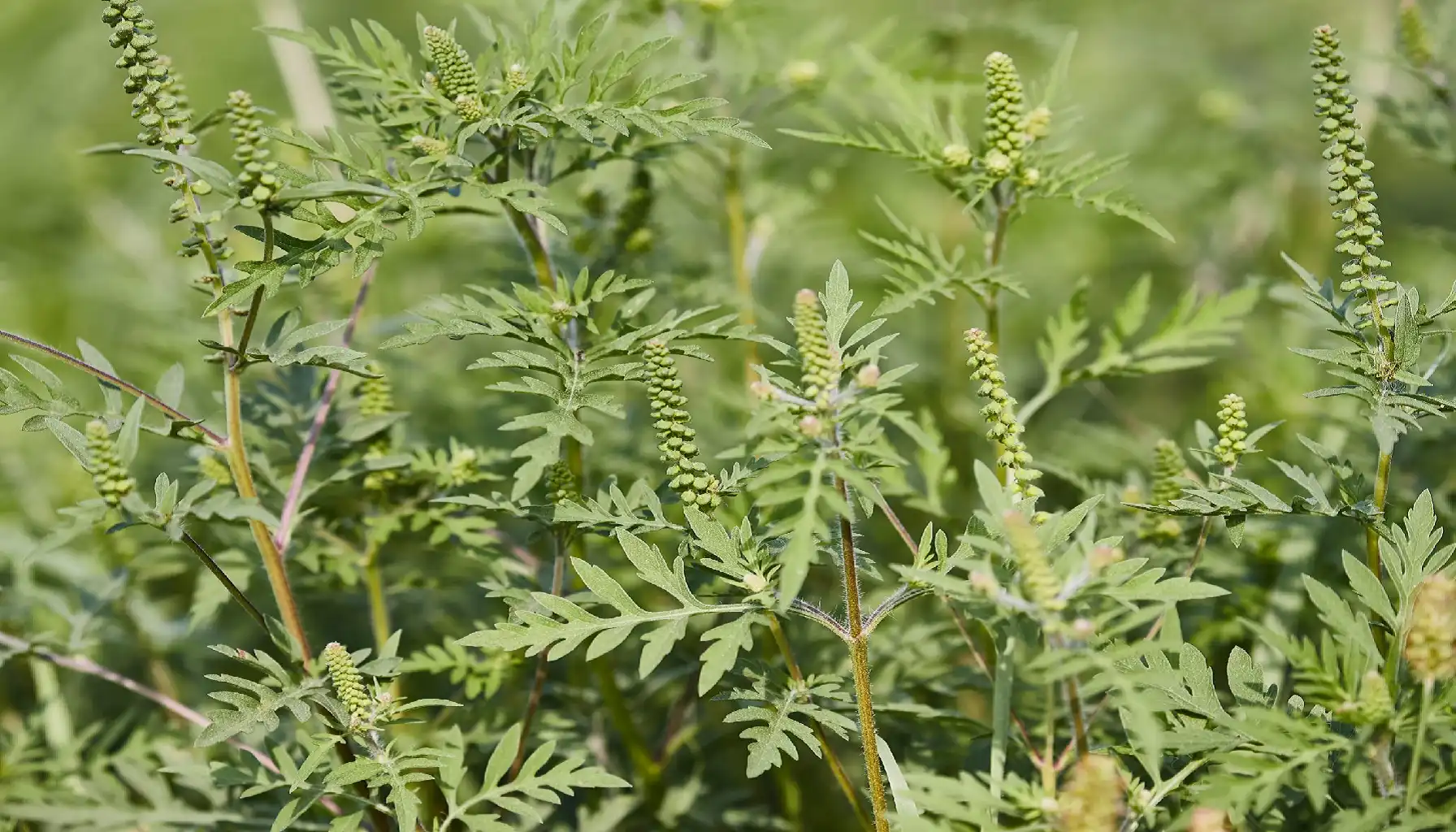The so-called ponytail palm has confused more than a few gardeners because it isn’t a true palm. It’s not really a tree either. Despite the name and appearance, Beaucarnea recurvata is most closely related to desert plants like agaves and yuccas: adapted to sun and survival. If you have any doubts on what it is, use AI Plant Identifier for diagnostics.
As a botanist who’s studied arid-adapted flora for two decades, I can tell you this is one of the most drought-tolerant plants you’ll ever meet in cultivation. The palm develops a thick, swollen base (called a caudex), which stores water for long dry spells.
If you’ve only seen one as a tabletop specimen, a quick online search for a mature ponytail palm tree in its native habitat might completely change your perception of the species.
Common Name | Ponytail palm, elephant's foot |
Family | Asparagaceae |
Mature Size | 6-8 ft. tall, 3-5 ft. spread; |
Sun Exposure | Full |
Soil Type | Sandy, well-drained |
Soil pH | Neutral |
Hardiness Zones | 10-11 (USDA) |
Bloom Time | Summer |
Flower Color | White |
Indoors, this plant grows slowly, rarely more than 4 feet tall without repotting. Outdoors, in the ground and with room to stretch, it can eventually top 20 or even 30 feet.
Despite its sturdy look, the palm does have its quirks. I’ve been called in more than once to help diagnose ponytail palm problems, like overwatering or cramped roots. Most cases are preventable with soil drainage and bright light. Indoors, it needs a south-facing window or grow light to maintain form and avoid stretching.
You should also remember that many popular ornamentals pose risks, and ponytail palm is toxic to cats and other animals.
If you're diving into ponytail palm care for the first time, remember, this is a desert-adapted succulent masquerading as a palm. Treat it more like a slow-moving cactus than a leafy houseplant.
Benefits of Growing
Beginner-Friendly, Not Boring
You don’t need experience to grow this plant. I often recommend it to beginners who’ve lost one too many ferns or tropicals. It doesn’t need daily attention and doesn’t collapse if you forget to water it for a week or two.
Its slow growth and strong root system make it a steady resident in even the most inconsistent households. If kept in a small container, it can even be trained as a ponytail palm bonsai.
Built-In Drought Resistance
The swollen trunk functions like a water reservoir. I’ve seen specimens go months without irrigation and still bounce back. Indoors, it tolerates dry central heating and low humidity better than most houseplants. Just be sure to choose the right medium: well-draining ponytail palm soil is really important. Too much moisture at the base leads to rot, one of the few things that can actually kill it.
Adaptable Indoors
While it isn’t a major air purifier in the scientific sense, the tough, waxy leaves trap dust and subtly improve the surrounding air quality over time. The compact form of an indoor ponytail palm also fits well on shelves, desks, or tabletops.
Once mature, many palms also begin to produce offsets or side shoots: ponytail palm pups. These can be removed and replanted.
You can document your entire plant family, your growth stages, leaf development, or propagation progress. Check out How to Create a Digital Herbarium.
Daily and Seasonal Care Essentials
Light, Soil, and Watering Needs
Light is non-negotiable. The ponytail palm light requirements are high. Place it near a south- or west-facing window where it gets direct sun, or supplement with a grow light if needed. Outdoors, it feels fine in full sun but must be slowly acclimated to prevent leaf scorch.
Soil must drain freely. Use a cactus mix or amend potting soil with coarse sand or small gravel. The thick, water-storing trunk can’t handle soggy conditions.
If you have a doubt, let it dry out. The number one question I get from new owners is how often to water ponytail palm? The answer: not often. Water deeply, but only once the top inch or two of soil is fully dry. In winter, reduce watering even more.
Temperature and Humidity Preferences
This species prefers warmth: ideally above 60°F. In summer, it can be moved outdoors but should be brought inside before nights dip into the 40s.
It tolerates dry indoor air, and unlike many houseplants, it won’t complain about a lack of humidity.
Fertilizer Schedule and Seasonal Adjustments
Palms don’t need much feeding. Apply ponytail palm fertilizer once or twice during the active growing season (spring through early fall). I recommend a balanced or cactus-specific fertilizer: diluted and used sparingly. Overdoing it can give you salt buildup, which shows up as browning leaf tips.
This simple care routine: strong light, well-drained soil, and patience. It has helped me keep specimens thriving for decades.
Common Issues and How to Fix Them
Yellowing Leaves, Rot, and Overwatering
By far the most common cause of decline is excess moisture. If the caudex feels soft or discolored near the base, rot may already be setting in. Stop watering immediately, remove the plant from its pot, and inspect the roots. Trim off any black, mushy tissue and repot in dry, well-drained soil.
Pests: What to Watch For
Mealybugs and scale are the two most frequent culprits. They hide in the crevices where leaf bases meet the trunk. You’ll notice sticky residue, leaf distortion, or cotton-like fuzz. These can be removed manually with a cotton swab dipped in alcohol or treated with insecticidal soap.
Don’t confuse these symptoms with ponytail palm brown tips: they are more often caused by inconsistent watering, salt buildup, or low humidity than insects.
Environmental Stress and Recovery
Brown leaf tips, curling, or slowed growth often trace back to one thing: improper conditions. Too little light, overfertilization, and changes in temperature will all stress the plant.
Large, older specimens especially, like a mature large ponytail palm, can take months to bounce back after repotting or a move.
Any yes, ponytail palm propagation through seed is possible, but slow and rarely practical for home gardeners. Most indoor specimens won’t flower, and seed is rarely available. This is why collecting pups (offsets) from mature plants is often the preferred method when available.
If you're ever unsure whether symptoms are normal or cause for concern, I highly recommend using image-based tools. Apps that recognize visual patterns can help pinpoint stress factors. Read How to Use AI Plant Finder for Gardening Tips to know more.
How to Propagate a Ponytail Palm
The propagation of Beaucarnea recurvata isn’t fast. If you need advice on how to propagate ponytail palm, the short answer is: remove and root the offsets.
Seeds are rarely an option for indoor growers, and while the plant does bloom under the right conditions, a ponytail palm flower is an uncommon sight in containers.
Pup Removal and Replanting
Mature palms will occasionally grow small side shoots, or “pups,” at the base. They are genetic clones of the parent and can be removed and rooted.
Wait until the pup is at least a few inches tall with visible separation from the main caudex. Use a clean, sharp knife or pruning saw to slice it away as close to the base as possible
Let the cut surface of the pup dry and callus over for a day or two, this helps prevent rot. Then plant it in a small pot with sandy, well-draining soil
Water sparingly until roots develop, which may take several weeks
Best Time and Tools for Division
Spring and early summer are the ideal times to attempt propagation, when the plant is actively growing. You’ll need a sterile blade and a dry environment to heal the wound before replanting. Avoid division in cooler months when root activity slows.
If you're already in the process of repotting ponytail palm and notice pups at the base, that’s a good time to act. The root disturbance from repotting gives you an opportunity to divide without shocking the plant twice in one season.
Root Care During Propagation
Pups don't always come with developed roots, so be patient. Keep the soil barely moist and place the pot in bright, indirect light. High humidity can help, but overwatering will kill the offset faster than dry air ever could.
Once roots are established and new leaves appear, shift to regular how to care for ponytail palm guidelines: sparse watering, bright light, and a snug pot.
Pruning and Repotting Tips
Palms grow slowly, which means they rarely demand aggressive maintenance. Still, periodic pruning and thoughtful repotting are essential to keeping your ponytail palm plant health, especially if you’re trying to control its shape or size indoors. If you're looking to encourage branching, remove pups, or simply want to learn how to make ponytail palm grow taller, you will need the right timing and technique.
When and How to Prune for Shape
Pruning is less about necessity and more about design. For smaller indoor specimens, pruning is usually done to remove dry or damaged foliage.
Use sharp scissors and snip browning tips or ragged leaves at a 45° angle so they blend with the natural curl of the plant.
If your goal is to encourage a multi-headed look, this must be done while the plant is young, ideally when the trunk is under 6 inches in diameter. You’ll need to trim the central growing tip and wait for new heads to emerge.
Root-Bound Signs and Repotting Frequency
Repot every 3–5 years or when your plant has clearly outgrown its container. Avoid overly large pots, which can lead to excess moisture around the roots. Instead, go just one size up and handle the root ball gently. Repotting is also a good opportunity to remove pups and refresh the soil.
Choosing the Right Container and Soil
Choose a pot with large drainage holes, ceramic or unglazed terracotta pots are ideal because they allow moisture to escape. A mix designed for succulents works best, especially one with:
Heavy, moisture-retentive soils will rot the plant’s bulbous base. If your ponytail palm lifespan is a long-term project (and it often is, these plants can live for decades), a healthy root system is the foundation.
Is it a Good Idea To Get a Ponytail Palm?
If you just brought home a young plant or scored a large ponytail palm for sale, a well-timed trim or container upgrade keeps your plant thriving without stress.
And while this low-maintenance favorite is moderately safe for pets (under supervision!), many other houseplants aren’t, so before expanding your indoor jungle, make sure to read our article Toxic Plants You Should Know to keep your space safe.
FAQs
Is it a true palm?
Despite the name, the ponytail palm (Beaucarnea recurvata) isn’t a palm at all. It’s a succulent from the Asparagaceae family, more closely related to agaves than to coconut trees. The misconception is common among first-time owners looking into how to care for a ponytail palm.
How fast does it grow?
The ponytail palm growth rate is notoriously slow. Indoors, it might gain only a few inches per year, depending on light, pot size, and temperature. Outdoors in the ground, especially in warm zones, it can grow much faster reaching heights of 20–30 feet over decades. Most indoor specimens remain under 4 feet tall unless regularly repotted and exposed to strong light.
Can it live outdoors year-round?
Only if you live in USDA Zones 10-11. In places like southern Florida or coastal California, palms live in full sun and well-drained soil all year. In colder climates, it should be kept in a container and brought indoors before the first frost.
Is it safe for pets?
And if you're wondering, is ponytail palm safe for cats? Not entirely. While mistaken as pet-safe, palms do pose a risk to cats. According to the ASPCA, they contain saponins: natural compounds that can cause gastrointestinal distress in felines. Symptoms may include vomiting, diarrhea, lethargy, or in more serious cases, collapse. If you're researching palm cat safety, you should know that while this plant isn't considered highly toxic, it’s still best kept out of reach. If you think your cat has chewed on or ingested any part of the plant, contact your veterinarian immediately.
Related AI Plant Finder Posts
